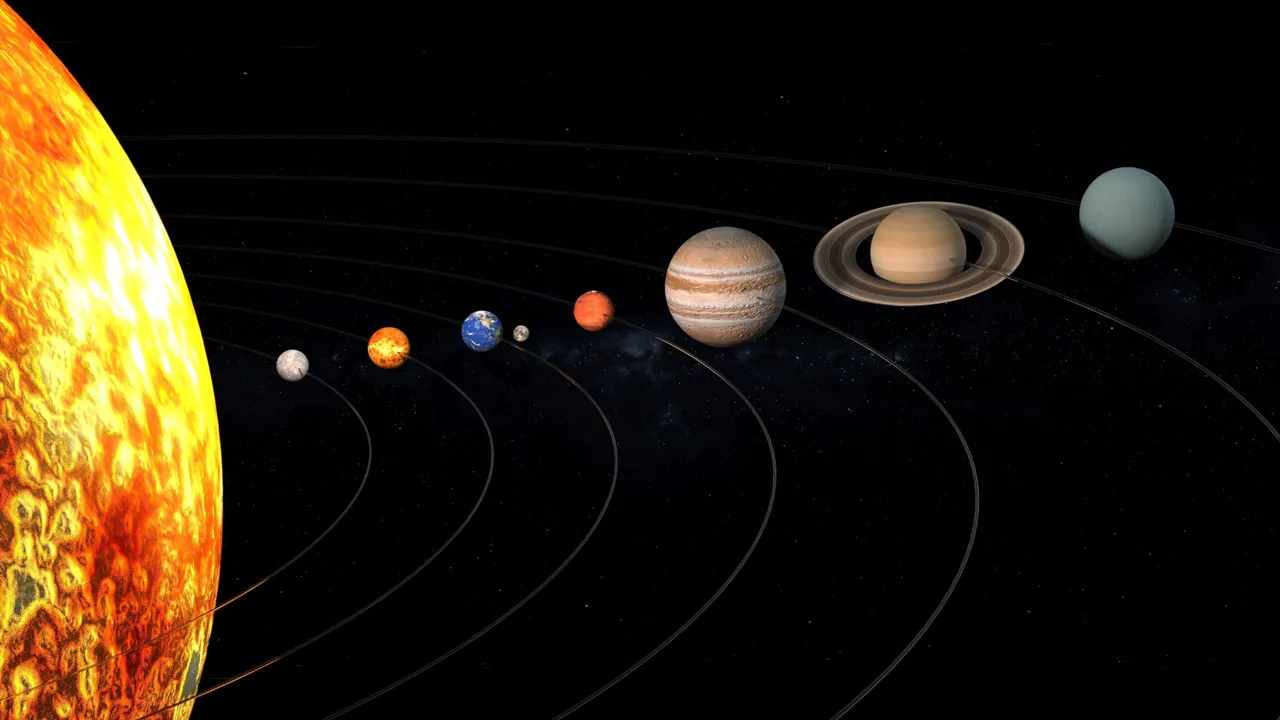
A solar system is a collection of celestial objects that orbit around a star, including planets, dwarf planets, asteroids, comets, and other smaller bodies. The solar system formed around 4.6 billion years ago from a cloud of gas and dust in the Milky Way galaxy. The Sun is the center of the solar system, and the planets and other objects orbit it due to its gravitational pull. The solar system is a vast and diverse place, with many different types of celestial objects and environments.
The solar system consists of eight planets, as well as a number of dwarf planets, asteroids, comets, and other smaller bodies.
The planets are:
- Mercury - the smallest planet in the solar system, with a highly eccentric orbit that takes it close to the Sun.
- Venus - the second planet from the Sun, known for its thick atmosphere and extreme greenhouse effect.
- Earth - the third planet from the Sun, home to a diverse range of life forms and ecosystems.
- Mars - the fourth planet from the Sun, with a Rocky surface and a thin atmosphere.
- Jupiter - the largest planet in the solar system, with a massive atmosphere and numerous moons.
- Saturn - the sixth planet from the Sun, known for its stunning ring system and many moons.
- Uranus - the seventh planet from the Sun, with a tilted axis that results in extreme seasons.
- Neptune - the eighth and farthest planet from the Sun, with a deep blue color and strong winds.
In addition to the planets, the solar system also includes a number of dwarf planets, which are objects that are large enough to be rounded by their own gravity but have not cleared their orbits of other objects. The most well-known dwarf planet is Pluto
The solar system, our own cosmic neighborhood, is an awe-inspiring collection of celestial bodies bound by gravity and orbiting the central star, the Sun. It's a dynamic region full of fascinating worlds, each contributing to its unique story. Here's a closer look:
Composition:
- The Sun: Our radiant star, accounting for 99.86% of the system's mass, drives its existence with its powerful fusion reactions. Its light and gravity provide the foundation for life and shape the orbits of all other objects.
- The Planets: Eight major planets, each with its own characteristics, dance around the Sun. From the rocky inner planets like Mercury and Venus to the gas giants like Jupiter and Saturn, and the icy giants Uranus and Neptune, each offers a glimpse into diverse planetary formation and evolution.
- Dwarf Planets: Smaller celestial bodies like Pluto, Ceres, Haumea, Makemake, and Eris exhibit some planetary features but don't meet the full definition of a planet. They hold valuable insights into the early solar system and the formation of planetary systems beyond our own.
- Moons: Many planets boast their own moons, natural satellites adding further complexity and beauty to the system. Earth's Moon, Jupiter's Europa and Io, and Saturn's Titan are just a few examples, each presenting unique environments with potential for harboring life or holding clues to the universe's history.
- Asteroids and Comets: Myriads of rocky asteroids and icy comets reside in various regions, remnants of the solar system's formation. They offer insights into the early stages of our cosmic neighborhood and pose potential threats to Earth, but also hold resources and scientific value.
Dynamics:
- Gravity: The Sun's gravitational pull dictates the orbits of all objects in the solar system, from planets to asteroids. Understanding these complex orbital dances is crucial for predicting future events and planning space missions.
- Magnetosphere: The Sun's powerful magnetic field, extending far beyond its surface, shapes the environment of the inner solar system and protects Earth from harmful solar radiation.
- Collisions: Throughout history, collisions between celestial bodies have played a significant role in shaping the solar system, influencing the formation of planets and moons and potentially impacting life itself.
Significance:
- Understanding our place in the universe: Studying the solar system provides insights into the formation and evolution of planetary systems, helping us understand our own planet's past and potential future.
- Search for life: Exploring other worlds within our solar system, particularly those with potential for liquid water, holds the exciting possibility of discovering extraterrestrial life forms.
- Resource utilization: Future endeavors like asteroid mining and potential space colonies could utilize resources within the solar system, expanding our reach and potential.
- Inspiration and curiosity: The solar system, with its diverse and often enigmatic worlds, serves as a constant source of wonder and inspiration, driving scientific exploration and fueling our desire to understand the universe we inhabit.